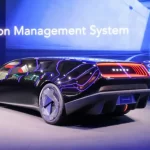

The Suzuki Vitara has been transformed from a utilitarian family-friendly SUV into more of a crossover with sleeker styling and plenty of advanced equipment. Optional all-wheel drive is available if you feel you really need it, while there’s also more dynamic driving ability on offer. Suzuki offers attractive finance deals which may persuade some, but the Vitara is not quite up with the class best.
About the Suzuki Vitara
If you can sacrifice a little ride comfort, and value driving dynamics more, the Vitara is a fine crossover that’s car-like to drive, with a sharp chassis and steering, but its lack of boot space counts against it. The mix of strong efficiency and performance is impressive in the Vitara’s now hybrid-only line-up.
Still, with a responsive and agile chassis for the class, and improved efficiency from the 1.4 Boosterjet petrol hybrid engine, this latest crossover-style Vitara is a much more alluring proposition than its off-road biased predecessors.
Combining value, style, safety and versatility in a good-looking package, only the low-rent feel of the dash and poorer depreciation than some rivals that really let the side down – especially if you’re spending more than £27k on a higher-end model.
Today’s Suzuki Vitara has changed considerably from the model that was first for sale in the UK in the 1990s. Gone are the chunky looks and purposeful looks of a genuine small off-roader, replaced by a compact crossover that’s designed to appeal to a new generation of buyers.
The current Vitara arrived in 2015, and is designed to be a competitor against cars such as the Peugeot 2008, Renault Captur, Nissan Juke and a wave of new small crossovers that have joined the class since the Vitara’s original release. As a result, Suzuki gave the Vitara an update in 2018 to help keep it competitive, although the Vitara’s closest rival might come from within, as the latest Suzuki S-Cross is bigger than the Vitara and doesn’t cost an awful lot more.
One big change for the latest Vitara is the introduction of front-wheel drive to the range. In fact, the majority of cars are now front-drive, with only the top-spec version gaining Allgrip 4WD. This highlights the expectations of modern SUV buyers, as they want the rugged looks and raised driving position of a 4×4, but still have the running costs of a conventional hatchback.
There are now two engine choices. Since the Vitara’s launch you’ve been offered a 1.4 Boosterjet petrol engine with mild-hybrid electrical assistance, delivering 127bhp and 235Nm of torque. In 2022, the brand introduced a ‘Full Hybrid’ model, which replaces the automatic mild-hybrid and should slightly improve running costs. It’s not particularly fun to drive, though, chiefly due to a sluggish automatic gearbox. Power stands at 113bhp; torque is a meagre 138Nm.
These days, there are two trim levels to pick from: SZ-T and SZ5, and all versions are pretty well equipped. There are electrically heated door mirrors, LED daytime running lights, climate control, Bluetooth and a host of safety equipment, too. SZ-T models also feature sat-nav, adaptive cruise control and a reversing camera, while SZ5 models come with a keyless go function, a panoramic sunroof and polished 17-inch wheels.
For an alternative review of the Suzuki Vitara, visit our sister site carbuyer.co.uk…





